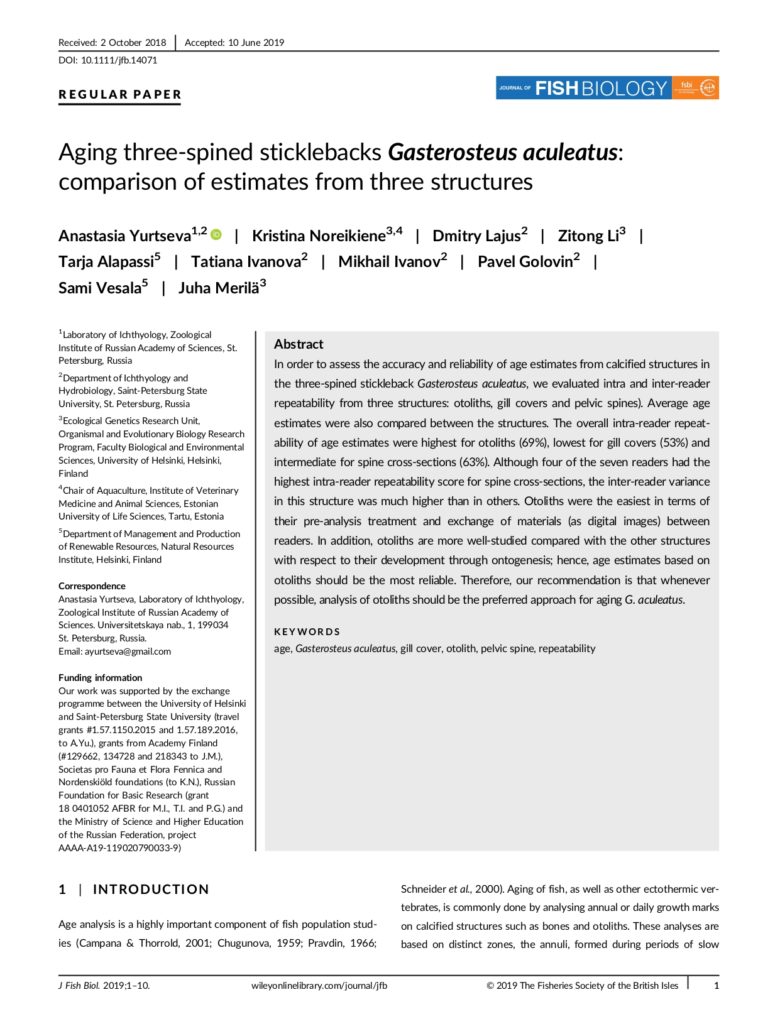Aging three-spined sticklebacks Gasterosteus aculeatus: comparison of estimates from three structures
Yurtseva, A., Noreikiene, K., Lajus, D., Li, Z., Alapassi, T., Ivanova, T., Ivanov M., Golovin P., Vesala S., Merilä, J.
Journal of Fish Biology (2019)
Yurtseva, A., Noreikiene, K., Lajus, D., Li, Z., Alapassi, T., Ivanova, T., … Merilä, J. 2019. Aging three-spined sticklebacks Gasterosteus aculeatus: comparison of estimates from three structures. Journal of Fish Biology, 95(3), 802–811.
Link to publication in the journal
Abstract
In order to assess the accuracy and reliability of age estimates from calcified structures in the three-spined stickleback Gasterosteus aculeatus, we evaluated intra and inter-reader
repeatability from three structures: otoliths, gill covers and pelvic spines). Average age estimates were also compared between the structures. The overall intra-reader repeatability of age estimates were highest for otoliths (69%), lowest for gill covers (53%) and
intermediate for spine cross-sections (63%). Although four of the seven readers had the highest intra-reader repeatability score for spine cross-sections, the inter-reader variance in this structure was much higher than in others. Otoliths were the easiest in terms of their pre-analysis treatment and exchange of materials (as digital images) between readers. In addition, otoliths are more well-studied compared with the other structures with respect to their development through ontogenesis; hence, age estimates based on otoliths should be the most reliable. Therefore, our recommendation is that whenever possible, analysis of otoliths should be the preferred approach for aging G. aculeatus.
Keywords: age, Gasterosteus aculeatus, gill cover, otolith, pelvic spine, repeatability


 8 (812) 321-32-79
8 (812) 321-32-79
About the author